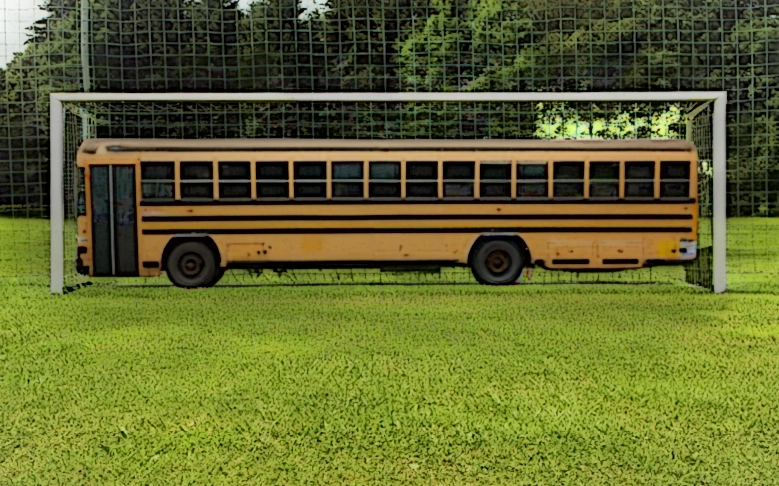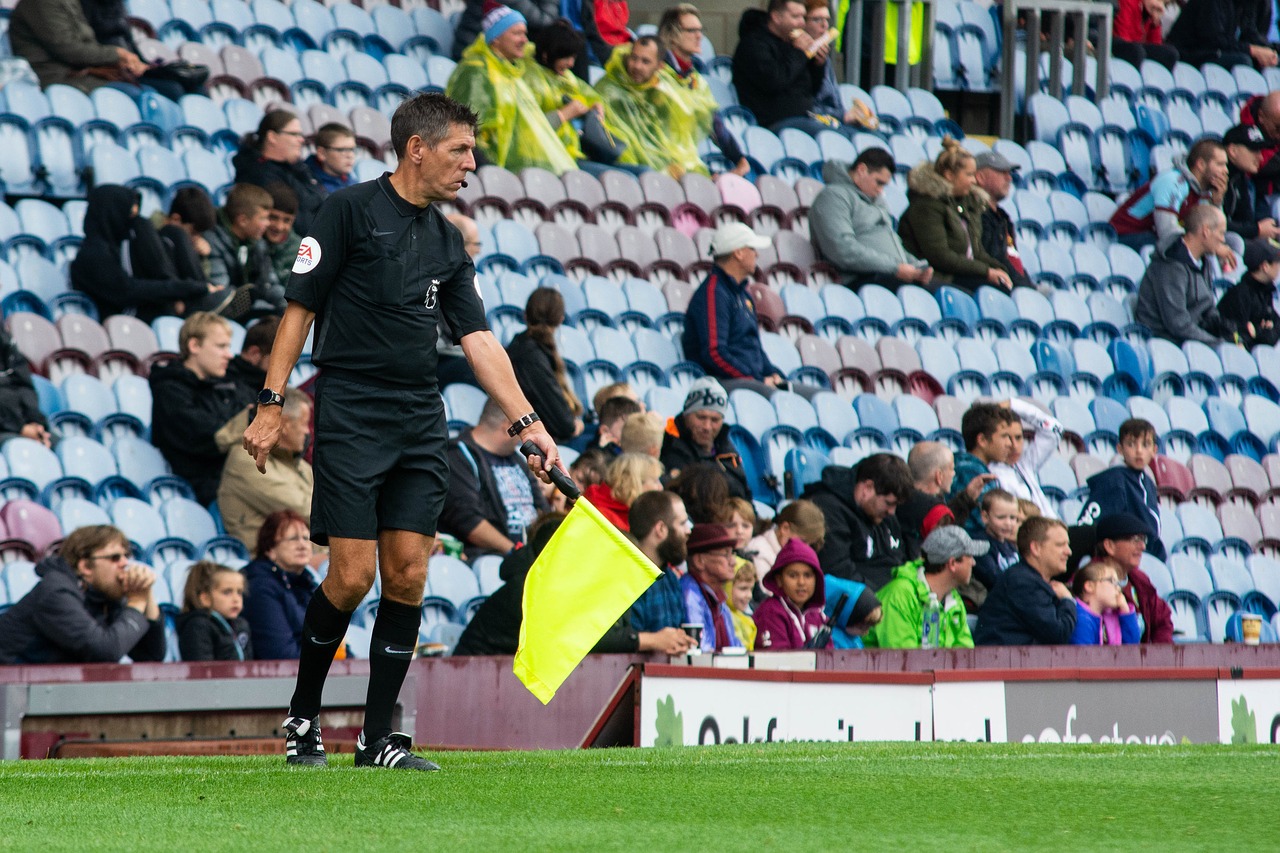Parking the Bus: What is it and when to use it

Few concepts are as divisive and recognizable in football’s tactical landscape as “parking the bus”. This highly defensive approach, where a team commits most of its players to protect its goal, has been praised for its pragmatism and criticized for its perceived lack of attacking ambition.
Understanding the nuances of “parking the bus” and how it contrasts with alternative defensive strategies, such as the high line, is crucial for coaches and players looking to adopt the most effective tactics for their team’s strengths and the demands of a particular match.
What Does “Parking the Bus” Mean?
“Parking the bus” refers to a highly defensive tactical setup in which a team positions most players in a compact, low block near its penalty area. The goal is to create a dense, impenetrable wall of players, making it exceedingly difficult for the opposing team to break through and create scoring opportunities.
This tactic involves committing almost every outfield player to defensive duties, leaving little to no space between the lines for the opposition to exploit. By occupying the spaces close to the goal, the defending team effectively “parks the bus” in front of their net, forcing the attacking side to find alternative and often more challenging avenues to create chances.
When Do Teams Use the “Parking the Bus” Strategy?
Teams may employ the ‘parking the bus’ approach in various situations, each with its own strategic considerations. When understood and applied, these considerations can make the team’s defensive strategy more effective and the game more manageable.
- Facing Technically Superior Opponents: When a team is outmatched in individual player quality or collective attacking prowess, “parking the bus” can effectively nullify the opposition’s strengths. By denying space and opportunities, the defending team can level the playing field and increase their chances of securing a result.
- Holding Onto a Lead: In high-pressure situations, such as knockout competitions or crucial league matches, teams with a narrow lead may prioritize defending that advantage over pursuing additional goals. “Parking the bus” allows them to devote maximum resources to protecting their goal and running down the clock.
- Managing Game Time: Towards the end of a match, a team with a one-goal lead might choose to “park the bus” to reduce the remaining time and limit the opposition’s opportunities to equalize. This tactic can be particularly effective in the closing stages of a closely contested fixture.
- Adapting to Injuries/Suspensions: When a team is missing key players due to injury or suspension, “parking the bus” can be a pragmatic way to compensate for the personnel loss and minimize the risk of conceding goals.
- Exploiting Counterattacking Potential: While less common, some teams may use “parking the bus” to set up dangerous counterattacking opportunities. By inviting the opposition to commit numbers forward, they can then quickly transition into attack and potentially catch the opposing team off guard.
Key Elements of “Parking the Bus”
Effectively implementing the “parking the bus” strategy requires a high degree of discipline, organization, and commitment from every player on the team. Some of the core elements of this tactic include:
- Compact Defensive Formation: Players maintain a deep, narrow shape, with little space between the lines and limited distance between teammates. This creates a formidable barrier in front of the goal, making it challenging for the opposition to find passing lanes or penetrate the defence.
- Zonal Marking Over Man Marking: Defenders focus on covering specific zones or areas of the pitch rather than chasing individual opponents. This allows them to anticipate and intercept passes or dribbles within their assigned zones without becoming drawn out of position.
- Emphasis on Clearances and Aerial Duels: With most of the team’s players stationed close to their own goal, the emphasis is on winning aerial battles, making timely clearances, and disrupting the opposition’s attacks through physical and tactical means.
- Limited Possession and Counterattacking Potential: Teams that “park the bus” typically concede most possession to the opposing side, relying on their defensive organization to withstand pressure. However, they may capitalize on rare counterattacking opportunities, with one or two players positioned higher up the pitch to break forward quickly.
Pros and Cons of “Parking the Bus”
Like any tactical approach, “parking the bus” has advantages and drawbacks, making it a calculated choice for managers.
Pros:
- Defensive Solidity: By committing most players to defend, the team creates a formidable barrier that can be incredibly difficult for the opposition to break down, mainly if executed with discipline and coordination.
- Less Physical Demand: The “parking the bus” approach generally requires less intensive pressing and running, which can help conserve the players’ energy and physical resources and allow them to maintain defensive concentration for longer periods.
- Effective Against Stronger Opponents: For teams with limited technical or attacking abilities, ‘parking the bus’ can be a pragmatic way to compete effectively against more talented and dominant opposition. This effective strategy can make the team feel empowered and competitive, regardless of the opponent’s strength.
- Potential for Counterattacking Success: While rare, the occasional counterattacking opportunity can present itself, and teams that ‘park the bus’ may be able to capitalize on these moments to score against the run of play. This potential for a game-changing counterattack can inject a sense of hope and opportunity into the defensive strategy.
Cons:
- Limited Attacking Opportunities: With most players committed to defensive duties, the team’s ability to create goal-scoring chances is significantly reduced, making securing a positive result through attacking play challenging.
- Constant Defensive Pressure: By conceding possession and territory to the opposition, the defending team invites sustained pressure, which can lead to defensive mistakes or set-piece opportunities for the attacking side.
- Potential for Defensive Lapses: The extended periods of defending can increase the risk of mental or physical fatigue, leading to occasional defensive lapses that the opposition may exploit.
- Perceived as “Anti-Football”: Fans and pundits often criticize the “parking the bus” tactic for its perceived lack of attacking intent and for deviating from the more traditional, entertaining style of football.
Contrasting “Parking the Bus” with a High Line Defense
We discussed the high-line defence in detail in a previous post. In contrast to the “parking the bus” approach, a high-line defence is a more aggressive and proactive defensive strategy. In this strategy, the team’s players push up the field, effectively compressing the space in the opposition’s half.
The key differences between these two tactical approaches include:
- Positioning and space: “Parking the bus” involves players remaining deeply positioned near their goal, conceding space in the opposition’s half. On the other hand, a high line seeks to maintain a defensive presence much further up the pitch, reducing the opposition’s overall playing area.
- Risk and reward: “Parking the bus” is a relatively low-risk approach, with the primary objective of avoiding conceding goals. Conversely, a high-line defence carries a higher risk, leaving space behind the defensive line that fast-paced attackers can potentially exploit, leading to one-on-one situations with the goalkeeper.
- Playing style: Teams that “park the bus” focus on disruption, patience, and defensive organization, while high-line teams prioritize aggression, pressing, and quickly regaining possession in advanced areas.
When to Use a High Line Instead of “Parking the Bus”
The decision to employ a high-line defence over “parking the bus” often depends on the team’s players’ strengths and characteristics and the match situation’s specific demands.
Teams generally favour a high-line defence with strong, athletic defenders who are comfortable engaging in one-on-one duels and have the pace to recover if the defensive line is breached. This approach also suits teams that aim to dominate possession and maintain a high-intensity pressing game, as the compressed space can lead to more opportunities to win the ball back in advanced areas.
Top-level teams like Manchester City and Bayern Munich are known for using a high-line defence to control the game’s tempo and impose their style of play, particularly against opponents who may rely on counterattacking tactics. However, this strategy requires exceptional coordination and discipline, as any mistakes in the defensive line can lead to dangerous counterattacking opportunities for the opposition.
In practice, especially in amateur football, you will employ both tactics throughout a game. For example, in my team, our players are not as physically imposing as most other teams, but we have a couple of skilful players. So, we prioritise keeping possession to avoid the air game, which doesn’t work in our favour. However, the opposition sometimes pushes us to defend in a block close to our goal. So, over time, we learned how to play both tactics.
The Role of Players in Both Strategies
The specific roles and skill sets required for each defensive approach differ significantly:
- “Parking the Bus”: Defenders need excellent positioning, patience, and the ability to read the game. Their primary responsibilities involve clearing aerial balls, making last-ditch tackles, and organizing the compact defensive shape. Midfielders and attackers often take on more defensive duties, closing down passing lanes and assisting with clearances.
- High Line: Defenders in a high line system must possess excellent speed, agility, and timing to intercept passes and engage in one-on-one duels with opposing attackers. The goalkeeper also plays a crucial “sweeper-keeper” role, often making proactive decisions to clear balls that break through the defensive line.
Examples of “Parking the Bus” and High Line in Professional Football
Historically, “parking the bus” has been associated with the managerial styles of José Mourinho, particularly during his tenures at Chelsea and Inter Milan. These teams were renowned for grinding results by prioritizing defensive solidity and limiting the opposition’s attacking opportunities.
On the other hand, high-line defences have become increasingly common in modern football, with teams coached by Pep Guardiola and Jürgen Klopp often employing this tactic to great effect. Manchester City and Liverpool, for instance, have embraced a high-pressing, high-line approach that seeks to win the ball back quickly in advanced areas and launch devastating counterattacks.
Perhaps one of the most famous defensive teams was the Euro 2004 winners, the Greek national team. The stats of the cup final between Portugal and Greece are a clear example of “parking the bus.” Portugal shot 17 times at goal and had 10 corner kicks, while Greece’s winning goal came from their only shot at goal from their only corner kick in the whole game.
Choosing Between “Parking the Bus” and High Line
The decision to employ “parking the bus” or a high-line defence ultimately depends on the team’s objectives, the players’ characteristics, and the match situation’s specific demands.
“Parking the bus” can be a suitable approach for teams looking to grind out results, particularly in knockout competitions or when facing a significantly stronger opponent. This tactic allows the defending team to minimize the opposition’s goal-scoring chances and potentially capitalize on rare counterattacking opportunities.
Conversely, a high-line defence is better suited for teams aiming to dictate the game’s tempo, dominate possession, and quickly regain the ball in advanced areas. This proactive approach requires players with exceptional defensive abilities and the stamina to maintain a high-intensity pressing game throughout the match.
Ultimately, mastering both “parking the bus” and high-line defensive strategies can give coaches a tactical edge, enabling them to adapt their approach based on the specific challenges presented by each opponent and match scenario.



